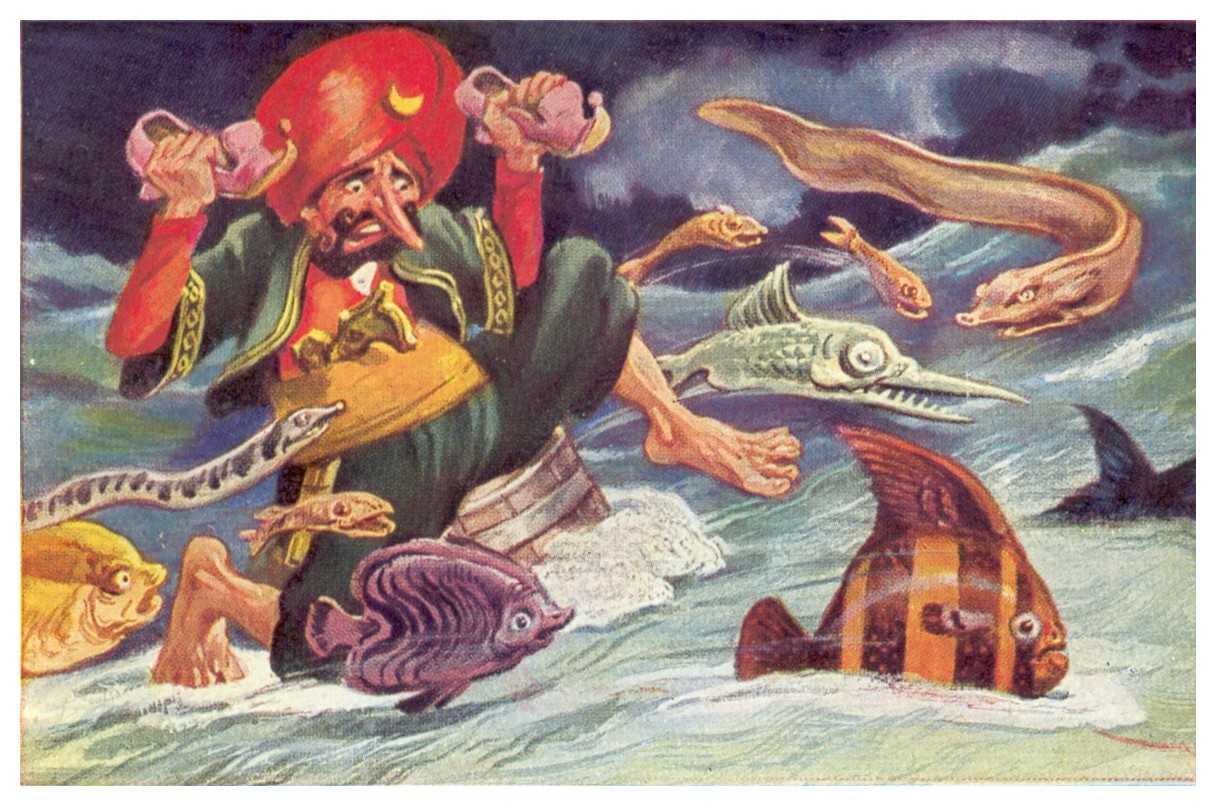
Sindbad has been flung into the tempestuous sea from the island that was the back of a monster whale. He clings to his tub, rowing desperately with his bare feet until the morning dawns.
In the Arabian Nights there is no mention of fishes accompanying Sindbad and jumping out of the water "as if to encourage him." The re-teller of the story obviously invented this detail to please the illustrator. Ordinary fishes are quite troublesome for a painter as nobody can see them under the water. So he uses this trick to make the weird and wonderful inhabitants of the ocean visible. We also remember the narrator's words: "Why shouldn't the sails billowing in the wind be able to carry the ship up into the air?" (Foreword). So if there are air-ships shouldn't there be air-fishes as well? Indeed, they occur several times in Tales of the Nations, e.g. on Picture 146 Creatures of the Deep Sea in the second last story of the book.
Sindbad's metamorphosis from a fairy tale character to a "toon" has now been accomplished. His costume is sufficiently unmistakeable - a huge red turban with golden crescent, a green jacket braided with gold, a gilded pistol in his belt, pointed slippers associated with Turkish foot gear - and, more importantly, his body language is that of a proper toon. For a toon is a creature always on the point of bursting into hyperactivity, always on the move, on the run.
Yet the picture remains a classical illustration, an example of well-balanced pictorial composition with a colour design corresponding to the diagonal movement of the protagonist, his flight away from the menacing dark purple horizon of the main on towards the (invisible) morning sky under which bright green water indicates the safety of the nearby shore.
Sindbad's features are contorted by fear and exertion. A few precise strokes of the illustrator's brush analyze the prevailing mixture of feelings, of which repulsion, frequently concomitant with mortal fear, is a strong component: Sindbad seems to be disgusted by the cold slimy bodies of the fish that surround him and the sombre perspective of being eaten by them. As fear and nausea are contagious feelings, the susceptible onlooker, already affected by the sight of the waves, may feel somewhat seasick.
Mortal fear is, of course, less "funny" than repulsion, which is why the caricaturist exaggerates the latter. He does it in a jocular manner, letting Sindbad primly hold up his slippers as if to save them from getting wet. Jokes of this kind gave this new genre of illustrated narrative the name "comic".
Note the highly sophisticated drawing of the surface pattern of the waves.